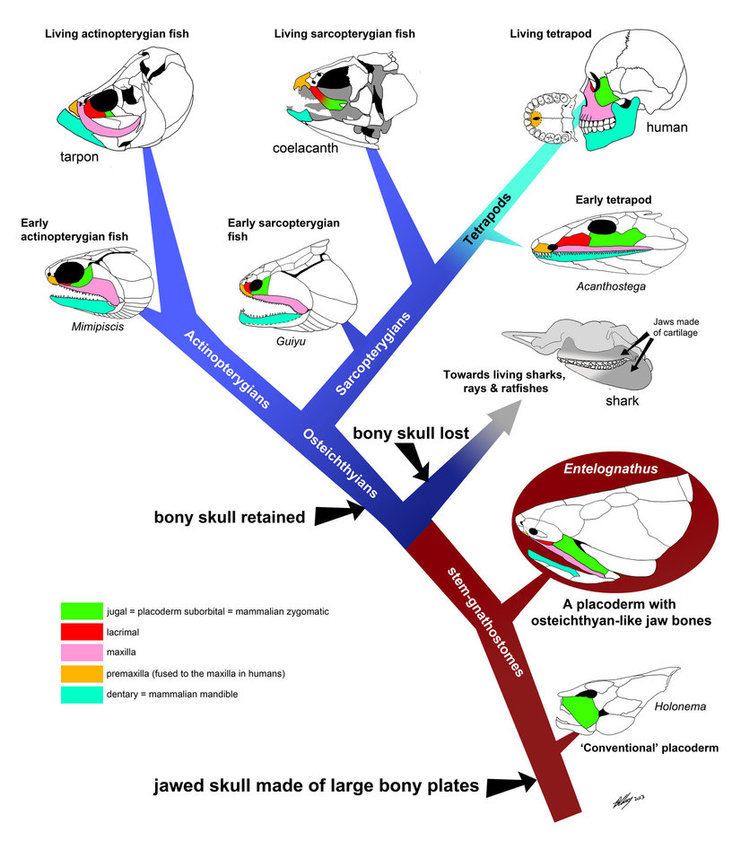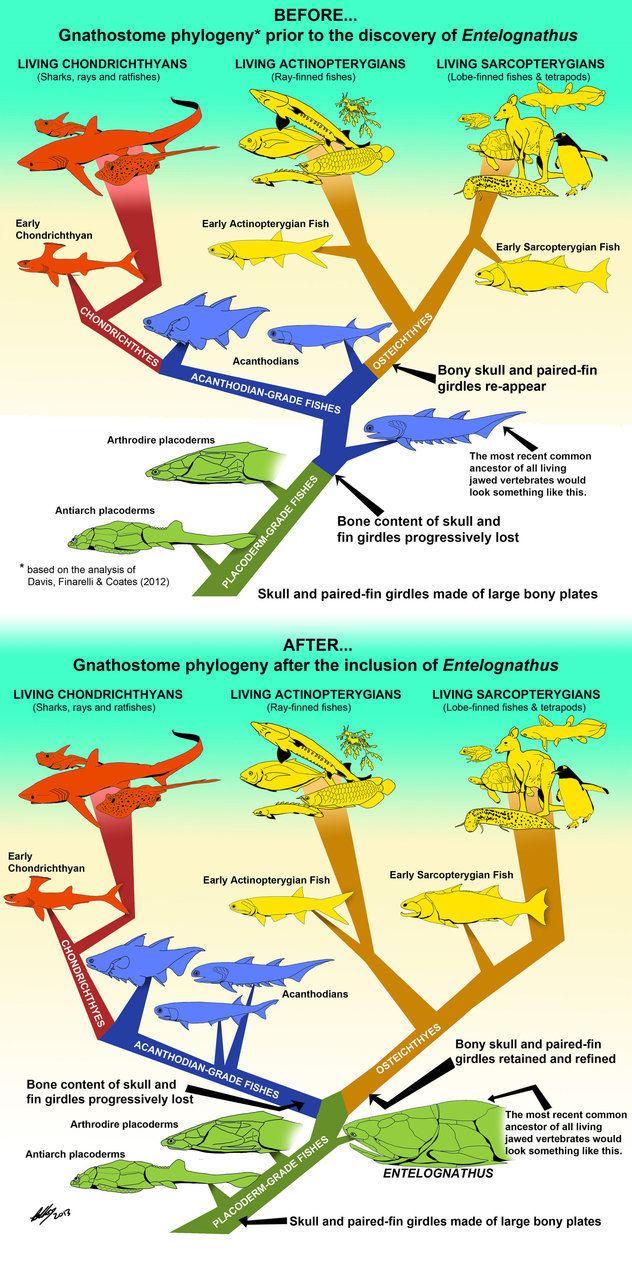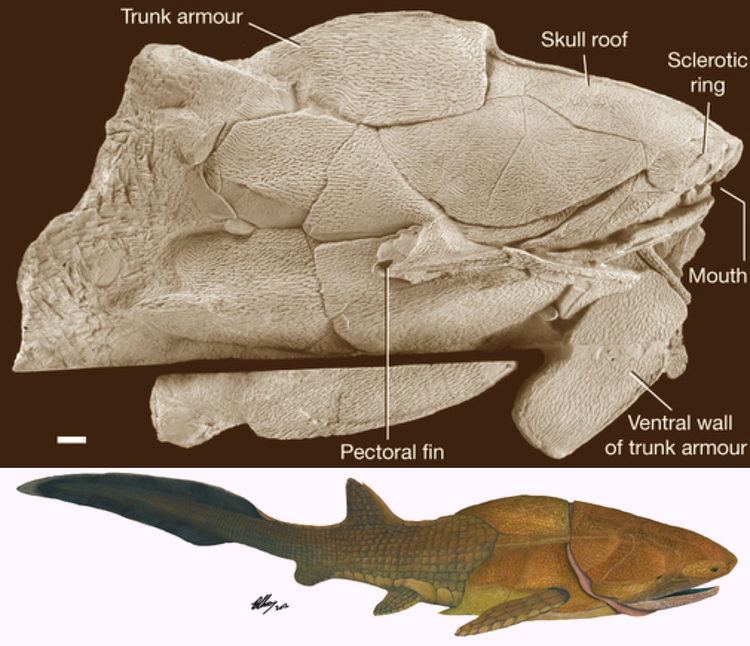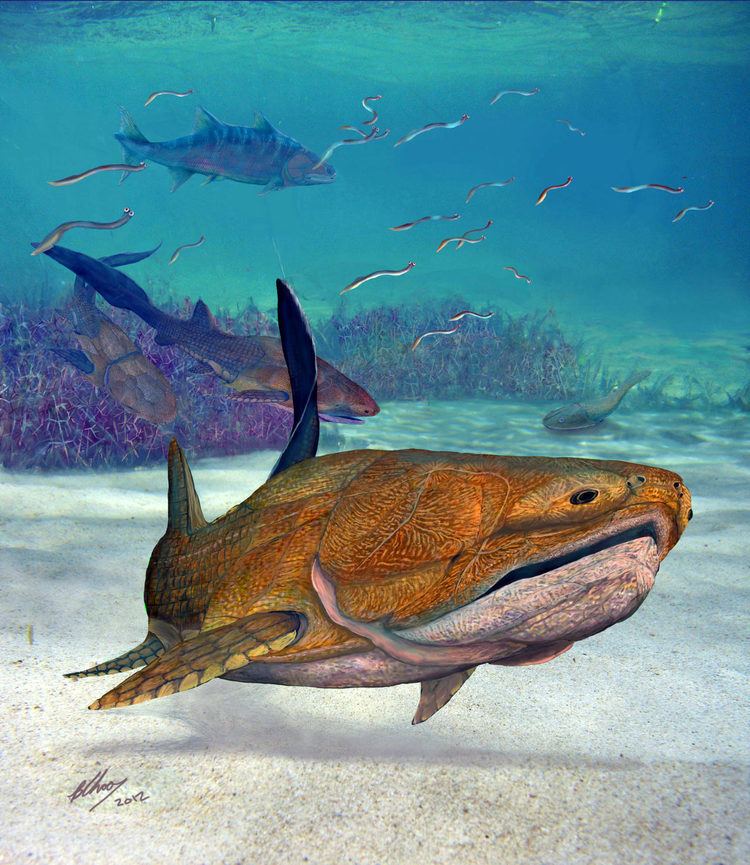Species E. primordialis Rank Genus | Phylum Chordata Order Incertae sedis | |
 | ||
Similar Qilinyu rostrata, Placodermi, Guiyu oneiros, Ptyctodontida, Arthrodira | ||
Entelognathus primordialis (“primordial complete jaw”) is a placoderm from the late Ludlow epoch of Qujing, Yunnan, 419 million years ago.
Contents

A team led by Min Zhu of the Academy of Sciences' Institute of Vertebrate Paleontology and Paleoanthropology in Beijing discovered the intact, articulated fossil in rock formations at Xiaoxiang reservoir.

Specimen and taxonomy

The holotype of E. primordialis is the uncrushed, and mostly intact anterior half of an individual with the articulating head and trunk armor preserved in three dimensions. The holotype is about 11 centimetres (4.3 in) long, and the live animal is estimated to have been over 20 cm (8 in) long. In overall form, animal resembles primitive arthrodires, but the anatomy of the jaws strongly suggests the anatomies of bony fish and tetrapods. Specifically, this is the first stem gnathostome with dermal marginal jaw bones. These bones are the premaxilla, maxilla, and dentary. Most known placoderms had simple beak-like jaws made of bone plates.

The researchers' cladistic diagram suggests that E. primordialis forms a polytomy with arthrodires, ptyctodonts, and all advanced gnathostomes (namely bony fish, tetrapods, acanthodians, and chondrichthyes).
Etymology

The generic name translates as "complete jaw", referring to how the animal had a complete set of dermal marginal jaw bones. The specific name translates as "primordial".
Evolutionary significance
Up until now, scientists assumed that the last common ancestor of jawed vertebrates was a shark-like animal, with no distinct jawbones, and that modern jaws evolved in early bony fishes. This discovery shows that modern jaws evolved earlier. It is possible that Chondrichthyes started with distinct jaws and then dispensed with them. This has been called the earliest known animal with what looks like a face.
